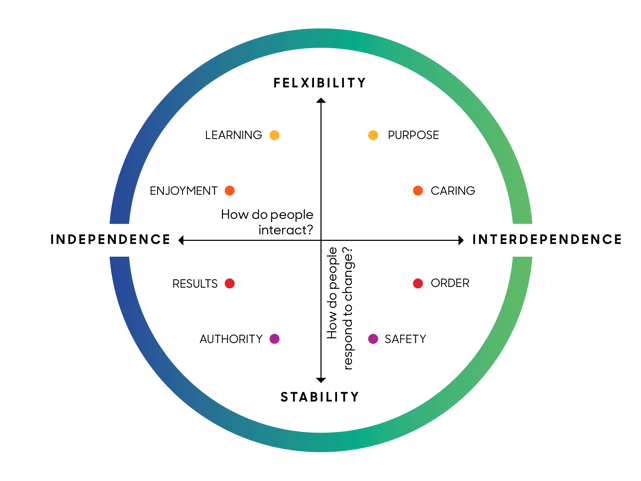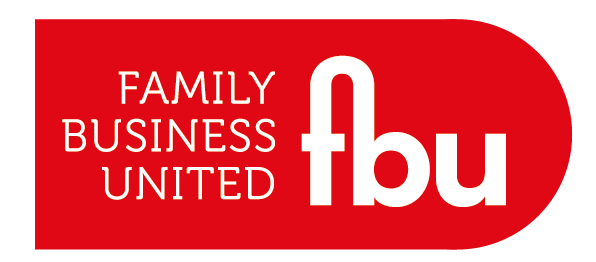Get in touch: nick.mayhew@alembicstrategy.com
Culture can be defined simply as 'the beliefs and attitudes that people share'. At work, culture can be linked strongly to the purpose and values of an organisation, and can have a significant effect on the way that people work together as well as the outcome of their efforts.
It is now becoming more widely accepted that building a positive corporate culture can be hugely beneficial to an organisation. In fact, I'd go so far as to suggest that, when done properly, culture can become a form of competitive advantage for a business. This results from the numerous improvements that a healthy, thriving culture can deliver.
The good folks over at Breathe HR cite a number of positive impacts:
- Increased morale, atmosphere and relationships (69 per cent)
- Employees willing to go the extra mile (61 per cent)
- Better customer service, customer satisfaction and customer retention (60 per cent)
- Improved individual performance and productivity (55 per cent)
- Reduced employee turnover (49 per cent)
- More people contribute ideas and support innovation (49 per cent)
- Reduced absenteeism (45 per cent)
When culture is recognised and nurtured by internal stakeholders, ie, the staff, external stakeholders such as customers and shareholders often benefit from the outcome.
Establishing culture
Building a culture isn't as simple as writing down the shared values of those working at a business, or defining a clear purpose, then rewarding the behaviours that feel are correct. Whilst these are all positive things to carry out, the complexity and dynamism of culture is such that it pays to adopt a holistic view that looks at the entire system.

I liken culture to a rope. It can be knotted, binding different elements together. It can create connection and produce interactivity. But it isn't always necessarily like this...
The complexity of culture means that there are always competing tensions at play. These could be the shared norms that you hold within a culture of diversity, or the clarity of purpose whilst remaining open to change. This leads me to a question around which is driving what...
Do people drive the culture, or does culture drive the people?
In fact, it is both - at the same time. Just like the threads of a rope that create knots, symbolic of both strength as well as tension, the people in a business become entwined when working together. Through working together at the same time, they create form. But the form is impacted by a greater force that controls and encompasses it. A positive force can help the knot by providing creating flexibility, alternative form or function. Now imagine if that force is negative, and prevents flexibility and function. The knot may even become frayed, and wither.
The rope / knot metaphor for culture is simple, but the culture itself is complex. There is no single, correct way to go about addressing culture change. And there isn't a step-by-step textbook guide as to how culture can be created. However, the evolution of culture within an office or workplace can be managed and contributed to by the people within it.
But how can we create and manage culture, and ensure that we are creating the right sort of culture? Where does one begin, and what do we look out for? When does a piece of rope become a knot?
Why consider developing culture?
Culture can determine how people behave within it. Therefore, developing a positive and thriving culture that promotes collaboration and innovation, for example, is complex. In fact, many will argue that it can only be developed through qualitative research that feeds into the direction a culture needs to grow.
In business today, creating the right culture might be the difference between becoming a competitive, viable company, and being a short-lived also ran. In addition to this, it's also possible that culture can create problems for organisations in that it becomes hard to change. Take Marks & Spencer, who found themselves in a difficult market position a few years ago. When they wanted to adapt to being a more imaginative business, the firm struggled to shift mindsets due to the embedded culture. Moving to a more creative state took effort and investment.
In a family business it might be that culture evolves naturally through shared family values, and is therefore considerably easier to develop. Maybe not.
A key question that organisations will ask when considering embarking in culture change is - what is the return on investment? How will the energy that goes into developing a culture deliver benefits back to those investing in it? It's not like determining a budgetary spend for market expansion or new product development. It's incredibly hard to quantify if the effort is justified by the gain.
The word culture derives from the word cultivate, a term commonly associated with gardening and agriculture. However, the principle behind nurturing and growing plants is akin to the creation of culture within an organisation. There is no single action that the 'grower' takes that yields in the healthiest, most vibrant and impressive result. Certainly, in business, it's a collection of actions which include:
- Establish the appropriate vision and values
- Attract and appoint the right people
- Set a framework with processes for people to inhabit
- Encourage good habits and practices
- Create organisational transparency and openness
Connecting strategy with culture
Successful future growth is closely linked with strategy and the tactical plans that spin out of it. Strategy is the logic, but culture is the connection that an organisation makes - via people and the activities that they perform - which results in the products and services a business delivers. Therefore, it's important to recognise the critical link between strategy, people and culture.
If you were to look to the most productive and happiest workforces, I'm confident that you'll discover that all three are vital ingredients.
What type of culture does your business have?
It's likely that you've encountered businesses with a strong culture, and those with a poor culture, or maybe somewhere in between. Are you looking to move away from the current culture? Perhaps it's toxic or a hinderance and preventing you moving forwards in some way? Or, are you looking towards something better, fixing the roof while the sun shines?
Either way, the question comes back to your strategy. What is it, and what you are trying to achieve in the long run? What behaviours and attitudes fit with it and then how can you go about implementing it. Where do people feature within your strategy?
Where do you start developing culture?
Whilst there is no universally agreed starting point, but a good place to get things moving would be to get a gauge on current culture by understanding the shared beliefs and the values of the people.
With the absence of any universal language or agreement on definitions, models and methods it can be confusing, intangible and ambiguous. However, HBR has carried out a review of vast amounts of literature on the subject, and has come with up with some generally accepted principles concepts.
The focus is two key questions about culture state:
- How do people interact - are they independent or interdependent?
- How do people respond to change - are they flexible or stable?

Illustration: culture principles - adapted from HBR: 8 culture types
What do we want our culture to be like?
So the question is, if you had a magic wand and didn't have to worry about the cost or the 'how', where would you move your organisation on this chart? Which quadrant would your ideal business culture occupy?
Like water, you can not add nor take away, only change the form. It is fluid and so is culture.
This might be a good starting point for your own culture discussions internally - a survey of where you and your people envisage the most suitable ground to occupy within the framework. From there, designing a future state, and a strategy to move you towards it will undoubtedly become an engaging and energising activity that collaboratively binds the people of your organisation.
For more information about culture, strategy and how to be more productive in your organisation, sign up for updates like this or get in touch.
Get in touch: nick.mayhew@alembicstrategy.com




